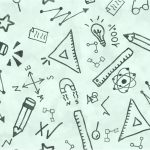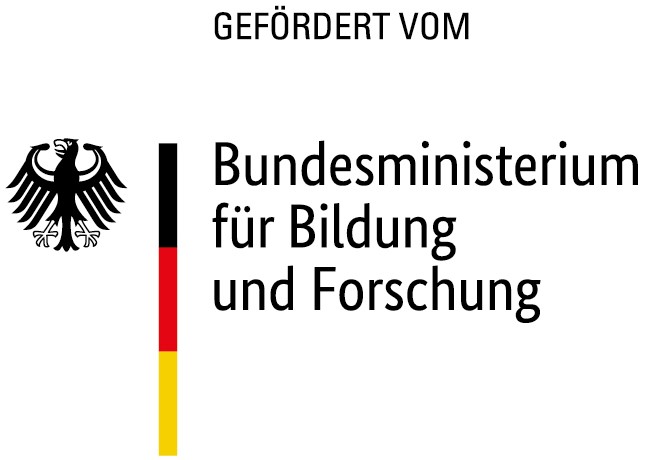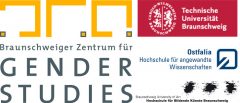 The materials identified in the course of the conceptual phase, such as checklists or online platforms, are made available here as an aid. They support the project of integrating the gender dimension into research. Concrete examples from other institutions provide insight into interdisciplinary research in STEM disciplines that takes the gender dimension into account.
The materials identified in the course of the conceptual phase, such as checklists or online platforms, are made available here as an aid. They support the project of integrating the gender dimension into research. Concrete examples from other institutions provide insight into interdisciplinary research in STEM disciplines that takes the gender dimension into account.
Here you will find:
- Website „Relevance of Sex, Gender and Diversity“ (German Research Foundation – DFG) >>
- Website „Genderaspekte in Horizont Europa“ (gender aspects in Horizon Europe) (European Union – EU) >> (DE)
- Platform „Gendered Innovations in Science, Health & Medicine, Engineering, and Environment” (Stanford University) >>
- Platform „Gender in Research as a Mark of Excellence” (EU) >>
- Compilation of materials „Gendered & Diversified Innovations“ (University of Jena) >>
- Tool for reflection „GERD – Gender Extended Research and Development” (Universities of Bremen and Kassel) >>
- Portal „Gendering MINT digital” (gendering STEM digital, HU Berlin) >> (DE)
- Website „MINT 4 TU” (STEM 4 TU, Equal Opportunity Office of TU Braunschweig) >> (DE)
- Results of the working group „Gender, Technology & Mobility” (TU Braunschweig/Ostfalia HaW, 2012-2022) >>
- Doctoral dissertations within the framework of „Gendered Configurations of Humans and Machines (KoMMa.G)” (TU Braunschweig/Ostfalia University of Applied Science/Braunschweig University of Art (HBK), 2017-2022) >>
- Literature on gender and the STEM disciplines sorted by topics and disciplines >> (under construction) (DE)
Website „Relevance of Gender and Diversity in Research“ >>
In addition to a checklist for applications (DE) on planning research projects, the DFG also provides subject-specific information for the following scientific disciplines on its website:
The DFG Senate 2020 has highlighted the reflection of gender and diversity dimensions as “part of good research practice” in its statement (DE) “Sex, Gender and Diversity. Importance to Research Projects”. Furthermore, since 2022, the „FResearch-Oriented Gender Equity and Diversity Standards“ stipulate that research projects must provide information on measures for gender equality and diversity.
Website „Genderaspekte in Horizont Europa“ (gender aspects in Horizon Europe) >> (DE)
The Contact Point Women into EU Research (in German: Frauen in die EU-Forschung, FiF) in the EU Bureau of the BMBF provides advice on EU funding. Horizon Europe places a stronger focus on the gender dimension than previous framework programmes, which is explained on a dedicated website of the EU Commission. The EU also finds that the consideration of the gender dimension in research content and methods is a component of scientific excellence; this can be looked up in the Strategic Plan 2021–2024.
Unlike the DFG, equality and gender studies are closely interwoven, but both must be addressed separately in the application. Stating that the gender dimension in a research project is not relevant must be justified in a comprehensible way.
Tips, explanations and case studies on the gender dimension in research are given in the report of the EU project Gendered Innovations 2 discussed below.
Consideration is also given to whether the research consortium has expertise in gender issues or if appropriate training needs to be planned.
The European Commission’s explanatory video “The gender dimension in research” provides an overview.
As part of the English-language online workshop series “Gender Dimension in the European Research Area„, subject-specific events will be held until 2024, to which EU projects conducting research in the individual area are invited. In this respect, the agendas provide insight into research examples:
- mobility research (10 November 2022) – agenda
- research on artificial intelligence (24 May 2022) – agenda
- research on bioeconomy, the environment and sustainability (3 November 2021) – agenda
- health, medical and pharmaceutical research (2 June 2021) – agenda
The Gender Equality (GE) Academy offers workshops commissioned by FiF and presents methods and case studies in two videos:
GE Academy (2021): “Methods on how to include gender dimension in research”
GE Academy (2020): “Learn what is the gender dimension in research”.
Platform „Gendered Innovations in Science, Health & Medicine, Engineering, and Environment” >>
At Stanford University, “Gendered Innovations” provides a pioneering platform for integrating the gender dimension into STEM research, with the site’s structure described in more detail here.
On the platform, researchers can find tips and information on, among other things:
- methods, including “Rethinking Research Priorities and Outcomes”, “Rethinking Concepts and Theories” as well as general and specific methods for analyzing the relevance of sex and gender dimensions in different research areas >>
- terms from gender studies specially prepared for STEM disciplines >>
- guidelines differentiated by field, including technical sciences and urban planning >>
- numerous case studies on the successful integration of gender perspectives in the STEM fields of science (5 examples), health and medicine (11 examples), engineering (13 examples) and environment (11 examples).
A German translation of large parts of the website is provided by TU Wien.
Videos (including explanatory films, talks, interviews) on various research fields as well as various publications complete the offer.
Selected publications from the “Gendered Innovations” project at Stanford University
European Commission (2013): Gendered Innovations. How Gender Analysis Contributes to Research. Brussels. (download)
European Commission (2020): Gendered Innovations 2: How Inclusive Analysis Contributes to Research and Innovation. Brussels. (download)
Tannenbaum, Cara et al. (2019): Sex and Gender Analysis Improves Science and Engineering. Nature, 575 (7781), 137–146. (download)
Platform „Gender in Research as a Mark of Excellence“ >>
The EU-funded project “Gender in Research as a Mark of Excellence”, which was concluded in 2012, set important initial milestones for the systematic integration of the gender dimension in various research areas.
A checklist on gender equality issues and research questions provides guidance for different stages of the research process. In addition to a general toolkit that addresses what research with a gender perspective is and constitutes, there are also materials for different research areas that are also outlined in the toolkit:
- health
- food, agriculture and biotechnology
- nanosciences, materials and new production technologies
- energy
- environment
- transport
- socio-economic sciences and the humanities
- science in society
- specific activities of international cooperation
Compilation of materials “Gendered & Diversified Innovations” (University of Jena) >> (DE)
The “Equality and Diversity” division of the Friedrich Schiller University Jena, in cooperation with its Research and Transfer Service Centre, has compiled materials on gender and diversity in various research areas.
The materials are divided as follows:
- research on the relevance of gender and diversity in research projects (examples)
- videos and online training modules
- interdisciplinary ideas for the integration of gender and diversity in research projects
- life sciences – ideas for the integration of gender and diversity in research
- STEM disciplines – ideas for the integration of gender and diversity in research
- humanities and social sciences – ideas for the integration of gender and diversity in research
- intersectionality
- methodology tips & tools
- topic-related expertise and networking
The order of the topics corresponds to the outline on the page.
Tool for reflection “GERD (Gender Extended Research and Development)” >>
The GERD model, developed at the universities of Bremen and Kassel, provides knowledge and guidelines for teams. Using systematic starting points, gender and diversity aspects can be included in engineering sciences, technology research and development. The GERD model encourages a differentiated reflection on the social embedding of one’s own research by means of questions. The focus is on the questions:
- How can potential users be involved in user-related product research from the very beginning?
- How can we reflect on our own stereotypes and preconceptions?
“Get acquainted with aspects of reflection. Learn from case studies for the application in different phases of your project. Get inspired by questionnaires related to specific phases, so that you will find new insights to your project and can enrich it with gender/diversity-aspects.” The toolbox for reflection is based on seven phases of research and development, which are linked to typical activities and examples in the latest English-language version:
An overview of the original model for computer science and a corresponding reflection catalogue in German can be found here.
The article “Diversity in Computer Science” (DE) introduces the model in more detail in relation to computer science.
The blog “engines of difference – interdisciplinary voices in critical computing” takes up current discussions.
„GenderSciLab“ research facility >>
Biology and biomedicine—this is what the GenderSciLab, located on the campus of Harvard University, is working on as an interdisciplinary and collaborative research facility. With the aim of overcoming gender biases, work is being done there on integrating appropriate feminist concepts, methods and theories in biology and intersectional biomedical research. The different research foci with the responsible Principal Investigators can be viewed here. The GenderSciLab runs a blog with current contributions to research carried out there. There you can also download a research handout for researchers on the topic of “When and how can you apply sex contextualism in your own research?”, which helps to recognise and classify the gender dimension.
Portal „Gendering MINT digital“ (gendering STEM digital) >> (DE)
The portal Gendering MINT digital of HU Berlin offers researchers, self-learners and interested parties insights into the gender dimension in various STEM disciplines through eight Open Educational Resources units. It is suitable both for gaining an overview of the subject matter and the problem area and for recognising connections and guiding principles for one’s own research. Units are provided on the following thematic blocks (in German only):
- basic knowledge of gender studies (interdisciplinary)
- gender & biology
- gender & chemistry
- gender & computer science
- gender & mathematics
- gender & physics
- gender in technoscientific literacy
- equality in STEM
Some units have already been translated to English.
Website „MINT 4 TU“ (STEM 4 TU) >> (DE)
The Equal Opportunity Office of TU Braunschweig presents a strategy developed from an equal opportunities and gender perspective, which also provides information on how take the gender dimension into account. The following fields of action are of particular interest for the integration of the gender dimension in STEM research:
- What is gender in STEM? (DE) Findings and examples from science & technology studies are collected here.
- Funding research. (DE) An overview of advisory services at TU Braunschweig is provided here, as well as background information and materials on the topic, e.g. at institutions for external funding such as the DFG. References to selected research projects in the STEM field provide suggestions.
- Opening faculty culture. (DE) Here, in-depth information on creating awareness for a change of perspective towards a gender and diversity-oriented faculty culture as well as literature, studies and best practice examples are provided.
Other fields of action are dedicated to issues of gender equality and teaching.
Results of the working group “Gender, Technology & Mobility“ (2012-2022) >>
The working group (2012–2022) of Dr-Ing Corinna Bath, who holds the MGM-professorship at TU Braunschweig, has published, among other things, the following on its website, which is still accessible:
- notes on the research perspective in gender studies in the engineering sciences
- the brochure “Gender, Technik und Mobilität” (gender, technology and mobility) (DE), which uses concrete examples to provide insight into the extent to which the consideration of the gender dimension in engineering research offers innovative solutions to social, scientific and economic challenges
- information on specific research projects the working group
Doctoral dissertations within the framework of “Gendered Configurations of Humans and Machines (KoMMa.G). Interdisciplinary Analyses of Technology” (2017-2022) >>
The website of the interdisciplinary doctoral degree programme KoMMa.G, a cooperation of TU Braunschweig, Ostfalia University of Applied Sciences and Braunschweig University of Art (HBK), offers insight into the work of the completed doctoral degree programme. It comprises 15 interdisciplinary projects on the question of how human-machine configurations come about that support inequality and injustice, developing proposals for change. The focus was on the category of gender. The resulting publications and the volume on the final conference “Gendered configurations of humans and machines” as well as the respective doctoral dissertations provide an insight into research work across the boundaries of the humanities, social and media sciences and the natural, technical and engineering sciences.
BMBF project „GEWINN“ (2017-2020) >>
The focus is on the interface between computer science and gender studies. GEWINN stands for “Gender. Knowledge. Computer Science. Network on Research Transfer of interdisciplinary knowledge on Gender and Computer Science”. Aspects of gender are hardly taken into account in the everyday work of software engineering, in the design of hardware and software or in the management of IT projects. The project focuses on the exchange and networking of both areas with the aim of using the innovative power towards demand-oriented implementation. In the project, scientific knowledge of gender was further developed in a dialogue between companies and science, processed and made available for practical implementation. The findings, primarily aimed at companies, also offer a means of reflection for research practice. The knowledge pool “Gender & IT”(DE), with its data and facts, studies and expertise as well as digital talks and publications, invites you to browse. Recommendations for action (DE) provide suggestions with regard to work culture, attracting and keeping female professionals and gendering in alogrithmic systems. Best practices (DE) are formulated on the basis of company analyses in the fields of action of employer branding, networks, organisational structures and resources, among others. The documentation of the symposia on the above-mentioned topics in the downloads section offers more in-depth insight.

IH2E is a project of TU Braunschweig. Funding was raised in cooperation with the Braunschweig Centre for Gender Studies.


